Metal casting, an ancient manufacturing process dating back 6,000 years, is still included in the modern industry. A method of casting by pouring molten metal into a mold and letting it cool to solid form, it enables the production of pieces with complex shapes and suitable for mass production. Engineers need to have the capability of controlling the mix of material, accuracy of the mold and cooling rate, which directly affect the strength of casting.
This article will fully address the most significant design parameters and engineering concerns used in the metal casting process, wherever at the metal casting company where you work, or are doing DYI aluminum casting, and it will provide you with excellent technical understanding that will allow you to comprehend this ancient but contemporary technology domain better.
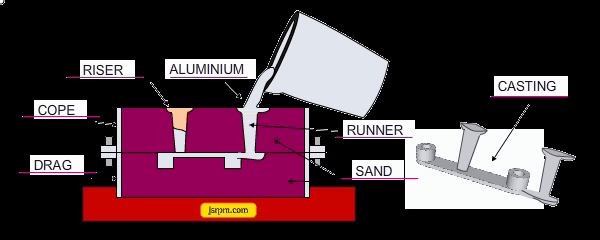
Simply put, how does metal casting work?
- Step 1: There must be an impression, the same as the end product. The impression is sand, metal or whatever, the exact choice is based on the requirements of the metal casting operations.
- Step 2: The metal is heated to a very high temperature until it turns into molten. The molten metal can be iron, aluminum, copper, etc., depending upon the requirements of the product.
- Step 3: Molten metal is poured into the mold. It is the most important step in metal casting operations and must be performed carefully so that defects can be avoided.
- Step 4: Gradual cooling of metal in the mold until it hardens. The cooling time is dependent on the metal and product size.
- Step 5: Once the metal has fully solidified, the operator opens up the mold and removes the casting. The casting at this point may have excess gates or burrs.
- Finally: The casting is polished, cleaned, or otherwise treated to achieve the final surface finish and shape desired. This step makes finished products of metal casting procedures meet standards.
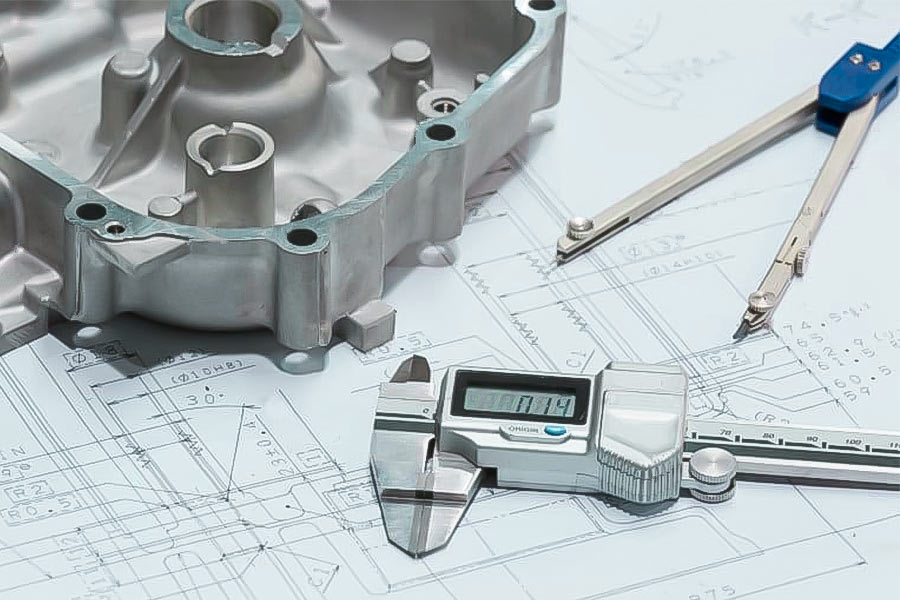
What are the most critical considerations in designing a metal casting?
1.Material composition selection
We must choose the metal material based on the part's purpose. For alumalloy metal casting, silicon content must be kept under control from 8-12%. The proportion enhances fluidity and crack resistance in aluminum alloys. The foundry must carry out a test of the material's purity using a spectrometer to keep impurities out of the final strength.
2.Wall thickness and uniformity
In metal casting design, the thickness of the wall should be as even as possible so that irregular shrinkage is inevitable upon cooling, resulting in deformation, shrinkage or cracking, especially in the case of alumalloy metal casting where the shrinkage of the aluminum alloy is larger, this phenomenon is more prominent. If thickening of certain areas cannot be avoided, we should use a gradual transition structure so that we will not bring in sudden changes.
3.Precision control and mold structure
Where the demolding efficiency is affected by the position of the parting surface of the mold, complicated parts should be promoted with the ejector mechanism to prevent jamming of the casting in the cavity. During operation, the mold should be inspected regularly for wear and tear, and molds with more than 0.1mm accuracy deviation should be returned for repair.
4.Rounded corners and chamfering
The castings must be provided with rounded or chamfered corners to avoid stress concentrations due to sharp edges. Cracked corners have a tendency to crack during cooling or stress, while rounded corners enhance structural strength. For example, in the casting of alumalloy metal, the corner radius in rounded corners must be at least 20% of the wall thickness in order to ensure the sustainability of the casting.
5.Temperature and cooling management
The melting point of metal should be controlled within ±15℃. High temperature can lead to coarse grain size, and low temperature can lead to poor pouring. We use a water cooling system in conjunction with an air cooling system, so that the temperature difference between inner and outer surfaces of castings of thick walls is less than 50℃.
6.Tolerance grade
Casting tolerance depends on the material, process and application. Sand casting tolerance is big, while precision casting tolerance is small. Typical dimensional tolerances on aluminum alloy castings are typically between ±0.5mm to ±2mm, and precision critical mating surfaces may require tighter control on tolerances. Designers need to pick the right precision as required to avoid over-processing to increase cost.
7.Optimization of gating system
The gate and riser design impacts the rate of material utilization. Designers use simulation software to predict metal flow direction and reduce the eddy current-caused oxidized slag. Material loss rate fell from 18% to 9% when the pouring system was optimized in an automotive component project.
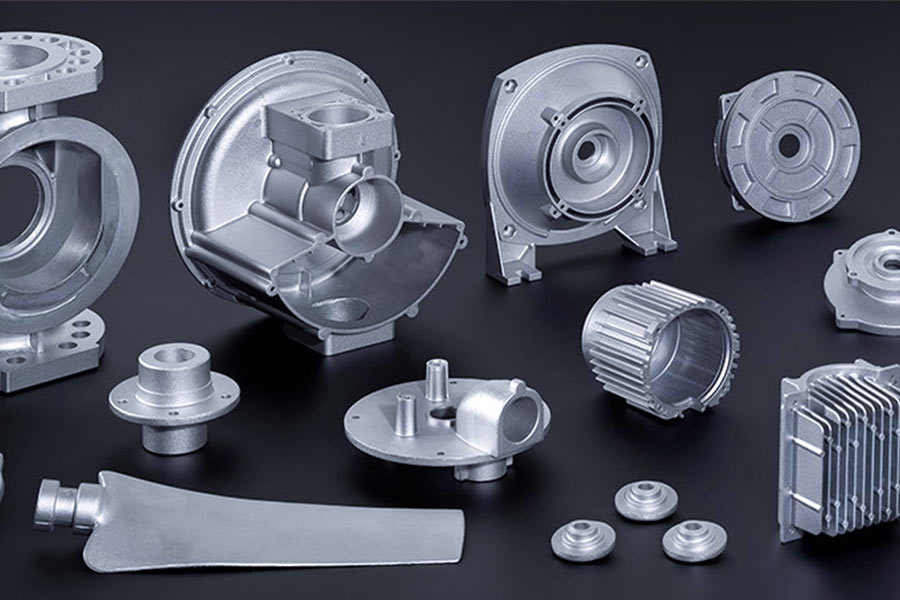
Casting mold joint design, what are the considerations?
1.Sealing design
Mold joints must be sealed completely to prevent metal liquid leakage. L-type, T-type, V-type and other joints must have sealing strips or precision fit structure. When leakage occurs, the preload can be increased or high temperature resistant sealing material substituted.
2.Structural strength requirements
Complex joints such as Y-type and + type need additional strengthening to endure. The joint will endure high pressure during casting, and the structure must be stress-checked. In case of cracking, we need to thicken the vulnerable portion or change to high strength material.
3.Selection of positioning method
All joint types shall be provided with locating pins or guide grooves. Type T and type + joints require bi-directional location. Where misalignment problems are encountered, we should check the positioning elements for wear and replace them in time.
4.Thermal deformation control
V-type and L-type joints should be utilized for thermal expansion clearance. The joints may deform and adhere after heating the mold. The solution is to modify the gap size or coat the contact surface with heat-resistant material.
5.Cooling system matching
Y-type and + type joints should not have cooling waterways. In case of uneven cooling, one should move the waterway or add local cooling points.
6.Ease of maintenance
T-type and V-type joints are to be of removable design. When failure occurs, the affected module can be replaced without influencing the overall mold.
Problem handling in common:
- Crack issue: T-type joint cooling too fast to cause cracks, modify the water-cooled pipe distance from the joint 15 mm to 10 mm after the solution.
- Burr problem: L-type joint clearance is too poor resulting in flying edge, replace the broken positioning pin and reduce the tolerance from ± 0.1 to ± 0.05 mm.
- Sticky mold problem: V-type joint surface roughness is not enough, spray boron nitride mold release agent after release force reduced by 40%.
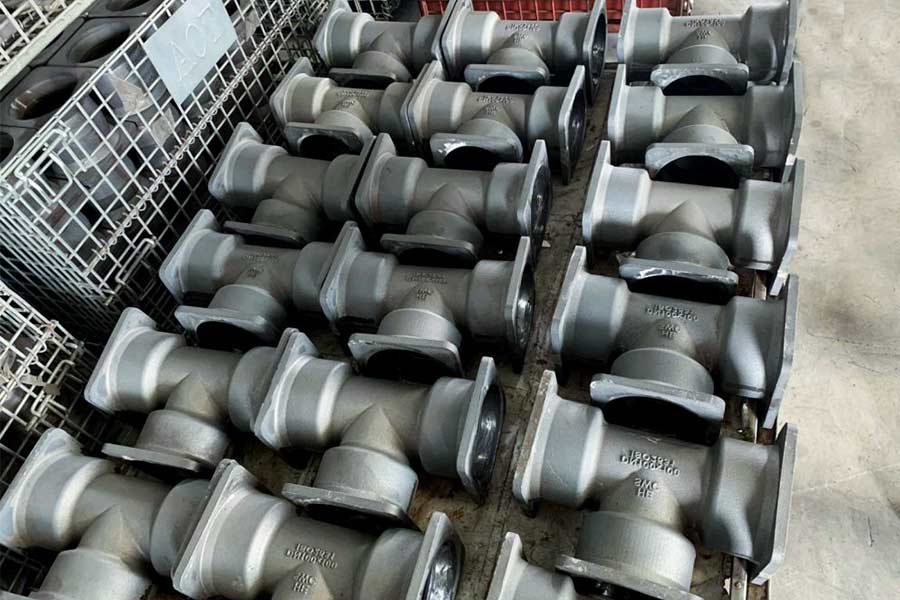
What are the main factors that affect the choice of casting process?
1.Castings material properties
The type of material directly affects process selection. Aluminum alloys, copper alloys and other non-ferrous metals are often furnace metal casting, owing to the fact that their melting point is suitable for furnace melting. Ferrous metals such as cast iron and cast steel require higher temperature melting equipment. Material shrinkage, fluidity should also be considered.
2.Production batch size
Large batch production can be used for a high degree of automation process, such as, die casting. Small batch production can utilize sand casting. furnace metal casting is usually used for medium batch production requirement.
3.Dimensional accuracy requirements
General castings allow ±1mm tolerance, precision parts require ±0.1mm tolerance. Different processes can achieve different accuracy:
| Casting process |
Dimensional tolerance (mm)
|
Surface roughness (μm) | Minimum wall thickness (mm) |
| Sand casting | ±1.0-2.0 | 12.5-25 | 3.0 |
| Permanent mold casting | ±0.3-0.8 | 6.3-12.5 | 2.0 |
| Die-casting | ±0.05-0.2 | 0.8-3.2 | 0.5 |
| Investment casting | ±0.1-0.5 | 1.6-6.3 | 1.0 |
4.Cost budget limitations
The main costs of production are mold costs, material cost, labor cost and depreciation of equipment. Costs between casting processes are very different from one another:
| Cost project | Sand casting | Permanent mold casting | Die-casting | Investment casting |
| Mold cost (million) | 0.5-2 | 3-10 | 15-50 | 5-20 |
| Material cost per piece | Low | Centre | Lower | Tall |
| Labor cost | 30-40% | 20-30% | 10-20% | 25-35% |
| Equipment depreciation | 10-15% | 15-25% | 30-40% | 20-30% |
| Suitable batch size (pieces) | 1-1,000 | 10-10 thousand | Over 10 thousand | 100-5,000 |
5.Product cycle time demands
Emergency orders must take into account the process cycle time. furnace metal casting tends to have a faster cycle time than investment casting.
6.Equipment and power conditions
The electricity consumption per hour of electric arc furnace is 30%-40% higher than that of medium frequency furnace. Companies should choose melting equipment according to electricity supply, without electricity in the area, it is better to use most of the gas heating furnace.
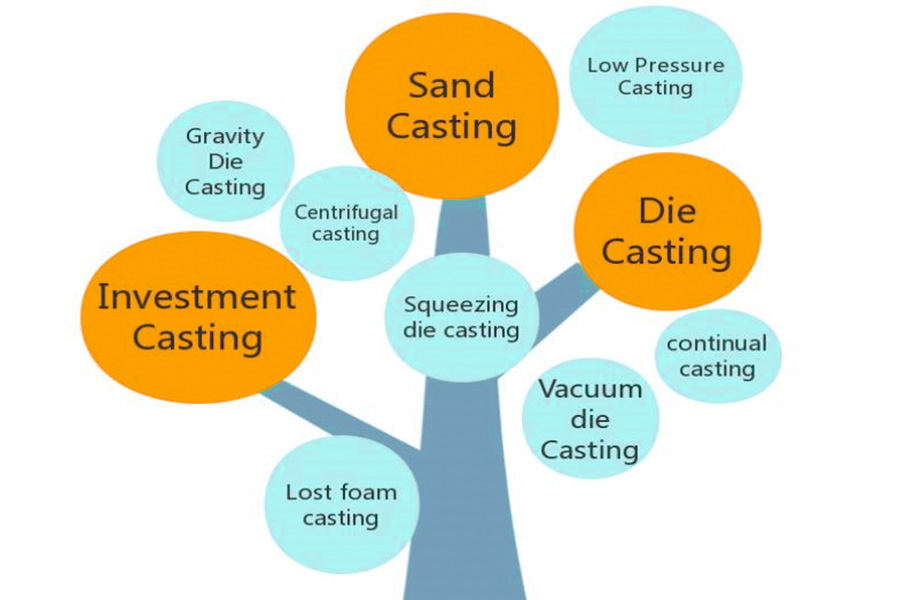
What is the essence of distinction between knife mold for metal casting and general mold?
1.Different material selection
Knife mold for metal casting requires high temperature resistant materials. knife mold for metal casting usually use H13 steel or tungsten steel, they can bear more than 1500 ℃ molten metal impact. General molds are mainly made of common 45# steel or cast iron, the highest working temperature is not more than 600 ℃. JS company data measurement show that the special knife mold material saved 200% of the mold life.
2.Structural design focus variation
Knife mold pay special attention to the edge of the structure. The edge part of metal casting mold should be designed with 0.2-0.5mm machining allowance to accommodate metal solidification shrinkage. Traditional molds pay special attention to the overall structural strength.JS's tooling molds use 3D curved surface parting design, which saves 30% subsequent processing compared with flat parting molds.
3.Different surface treatment requirements
Metal molds for tool casting must go through a two-layer surface coating. The mold cavity is first coated with 0.1mm titanium nitride, and then the parting surface is coated with graphite isolator. Basic molds receive only a single chrome plating layer. This process allows our molds to maintain a surface finish of Ra0.8 after 500 successive cycles of operation.
4.Major difference in cooling system
Knife molds should be equipped with directional cooling lines. The knife mold for metal casting process has the edge area designed with compact water cooling channels and cooling speed up to 30℃/s. Ordinary molds are naturally cooled mainly. The experiments have shown that directional cooling increases the uniformity of the tool hardness by 45%.
5.Great difference in service life
The service life of a metal casting tool mold is generally 3,000-5,000 pieces, whereas traditional molds only have 800-1,200 pieces. This is primarily because the tool mold takes on a monolithic structure, whereas traditional molds predominantly employ a combined structure. Our maintenance records indicate that professional tooling can be repaired 3 times more frequently than traditional molds.
How will metal casting design meet the process needs of lightweight materials?
Metal casting design to meet the process needs of lightweight materials can be addressed from the following five aspects, these solutions are directly linked to the jet cooling light metal casting industry technology and simultaneously aligned with the JS company's business characteristics:
1.Design for material suitability
Lightweight Alloys like magnesium alloys and aluminum alloys possess low density characteristic but poor fluidity at elevated temperatures and high shrinkage. Design for casting needs modification of the structure of the mold and parameters of the pouring system. Our company provides optimized gate location solutions to our customers via a database of material property tests. In thin-walled cast production, a stepped pouring system is utilized to combat the rate of flow of liquid metal, and vacuum technology is utilized to decrease porosity defects.
2.Integration of the jet cooling process
In the jet cooling light metal casting process, directional airflow cooling technology is utilized. This technology makes it possible to differentiated cooling of different parts of the casting with precise control of the direction and strength of the high-pressure air jet. In actual application data, this technology reduces the grain size of magnesium alloys by 40% and the tensile strength by 18%. Specifically for producing new energy vehicle motor shells, this technology can shorten the production process by 30%.
3.Structural simulation optimization
We utilize a simulation platform to design three-dimensional models. Designers can predict stress distribution during the process of material solidification and modify the mold shape beforehand. By optimizing local cooling channel design in the aerospace bracket project, deformation of the casting has been reduced from 1.2mm to 0.3mm. This design method has been applied to 85% of our company's lightweight casting projects.
4.Composite process development
For carbon fiber-reinforced metal matrix composites, we utilize low pressure casting and semi-solid molding process combination. The computer controls the mold preheating temperature in the ±5℃ range of accuracy, and the material reaches 20-40% solid phase rate through electromagnetic stirring device. For the production of robot joint parts, the process has increased the material utilization to 92%, 15 percentage points higher compared with the traditional method.
5.Quality control system
We are covered with online X-ray inspection system and 3D scanner. During production, we check real-time casting size information, and the accuracy of inspection reaches ±0.03mm. In the project of medical device, the system makes the product pass rate improve from 88% to 97%, and at the same time shortens the quality checking time by 40%.
Summary
Metal casting technology has penetrated all levels of modern manufacturing, from aerospace precision casting to small pieces of handiwork by diy metal casting aluminum enthusiasts, with great versatility. JS can both realize effective mass production of industrial-level casting and technical support for bespoke manufacturing by its smart temperature control system, digital simulation platform and modular mold design.
On the premise of the on-mass popularization of green alloy material and online inspection technology, the cast process goes beyond its former constraints and is keeping on empowering the automotive lightweighting, smart home and other industries. Welcome to visit our website for a complete collection of solutions ranging from heavy-duty castings to small-size aluminum castings, and explore the boundless potential in casting technology.
Disclaimer
The content on this page is for general reference only. JS Series makes no express or implied warranties regarding the accuracy, timeliness, or applicability of the information provided. Users should not assume that the product specifications, technical parameters, performance indicators, or quality commitments of third-party suppliers are completely consistent with the content displayed on this platform. The specific design feature, material standards, and process requirements of the product should be based on the actual order agreement. It is recommended that the purchaser proactively request a formal quotation and verify product details before the transaction. For further confirmation, please contact our customer service team for professional support.
JS Team
JS is an industry leading provider of customized manufacturing services, dedicated to providing customers with high-precision and high-efficiency one-stop manufacturing solutions. With over 20 years of industry experience, we have successfully provided professional CNC machining, sheet metal manufacturing, 3D printing, injection molding, metal stamping and other services to more than 5000 enterprises, covering multiple fields such as aerospace, medical, automotive, electronics, etc.
We have a modern factory certified with ISO 9001:2015, equipped with over 100 advanced five axis machining centers to ensure that every product meets the highest quality standards. Our service network covers over 150 countries worldwide, providing 24-hour rapid response for both small-scale trial production and large-scale production, ensuring efficient progress of your project.
Choosing JS Team means choosing manufacturing partners with excellent quality, precise delivery, and trustworthiness.
For more information, please visit the official website: jsrpm.com
FAQs
1.What is investment casting?
Investment casting is a precision casting process in which a model is first made of wax, then coated with multiple layers of refractory material to form a shell, heated to form a cavity after dewaxing, and finally pouring the metal. This process can produce precision castings with complex shapes and smooth surfaces, with dimensional accuracy up to CT4 and minimum wall thickness of 0.5mm, which is suitable for casting stainless steel, high-temperature alloys and other materials.
2.What are the advantages of cast iron?
Cast iron has three core advantages. First, excellent casting performance, good fluidity, low shrinkage. Second, low cost, wide source of raw materials and recycling. Third, balanced mechanical properties, wear-resistant shock absorption and easy to process. Especially suitable for the manufacture of engine block and other complex castings.
3.What is the use of mold pulling inclination?
The tilt angle is reserved in the mold design, the main role is to facilitate casting demolding. It can reduce the friction between the mold and the casting, prevent damage to the casting surface during demolding, and prolong the service life of the mold. Usually take 1-3 degrees, the higher the height, the greater the inclination.
4.Why rounded corners?
Rounded corners can eliminate sharp edges and corners of castings and avoid crack defects caused by stress concentration. It improves the fluidity of the metal liquid, reduces casting defects, and enhances the structural strength at the same time. Usually the radius of the fillet is taken as 20%-30% of the wall thickness.
Resource






